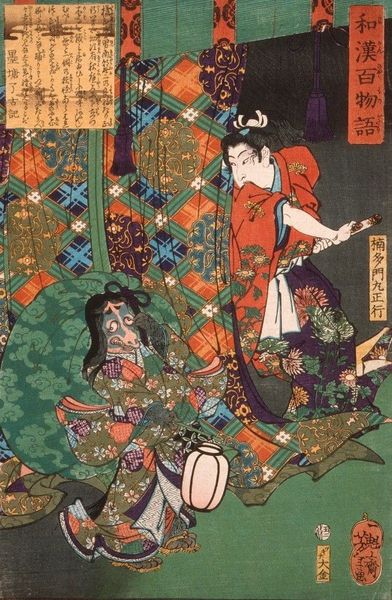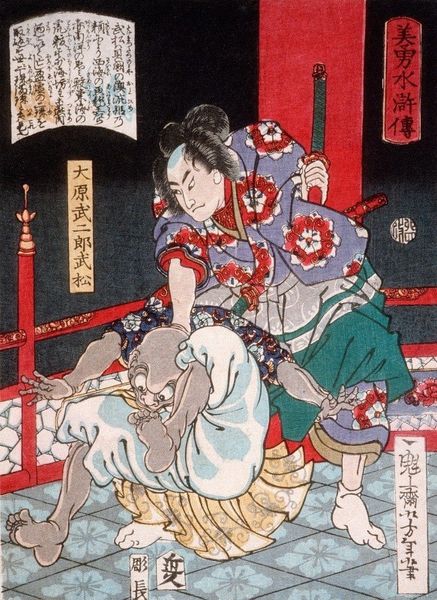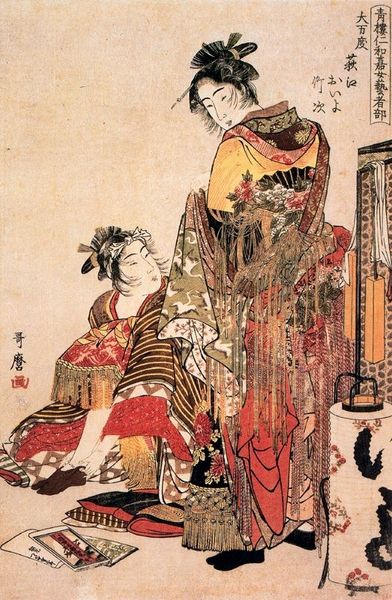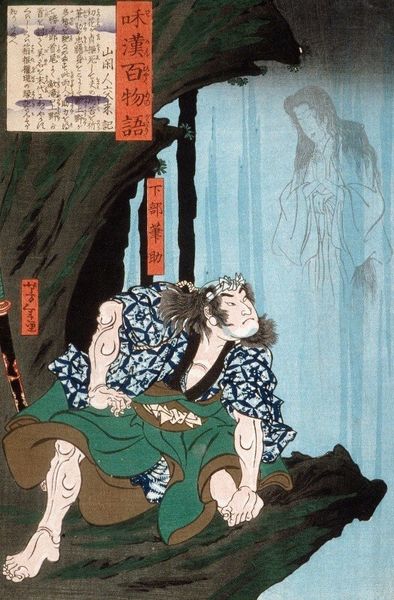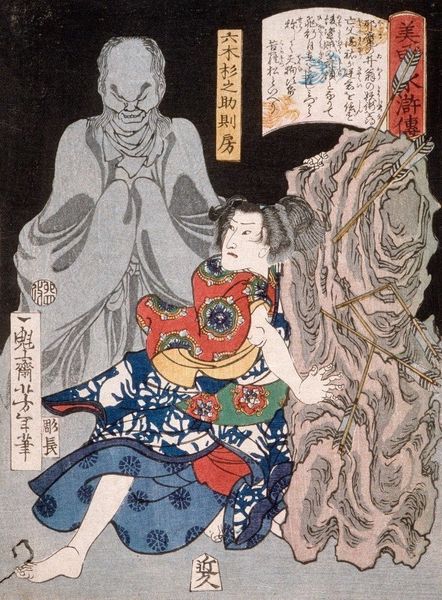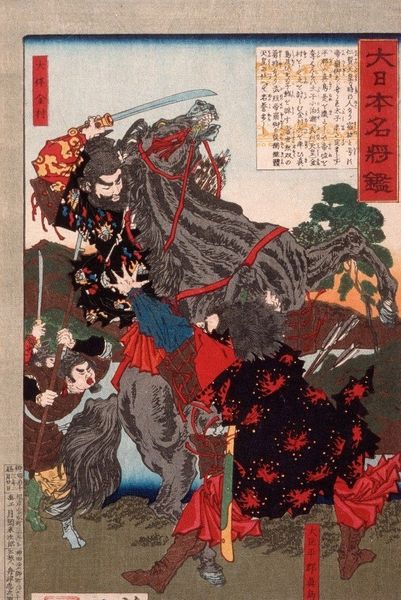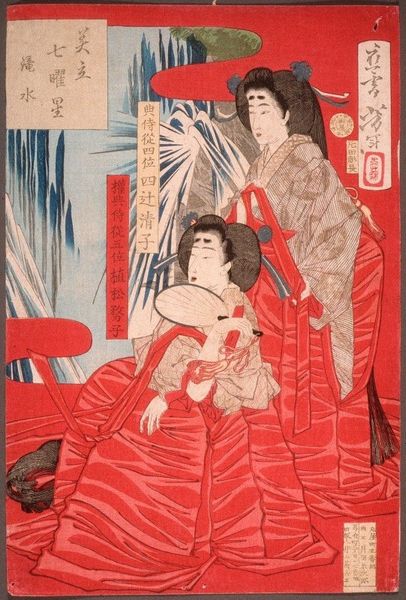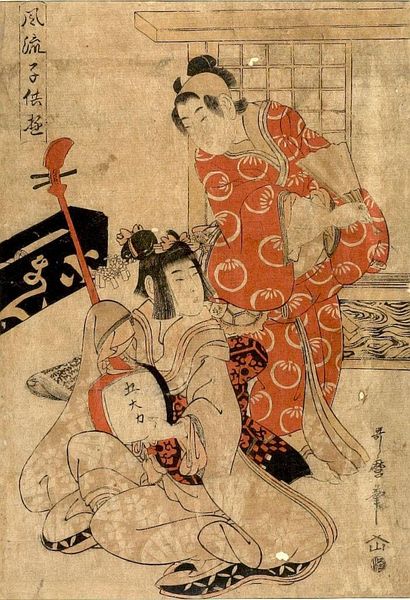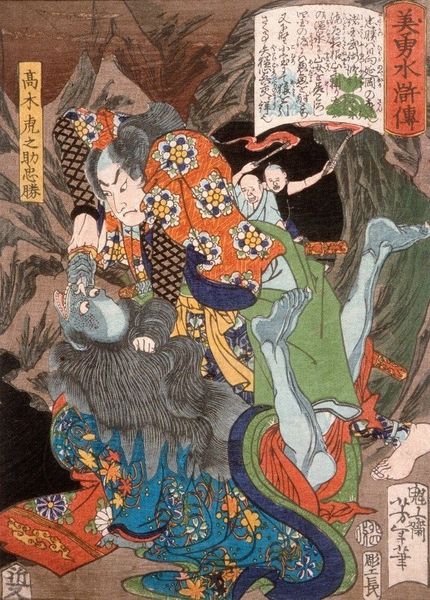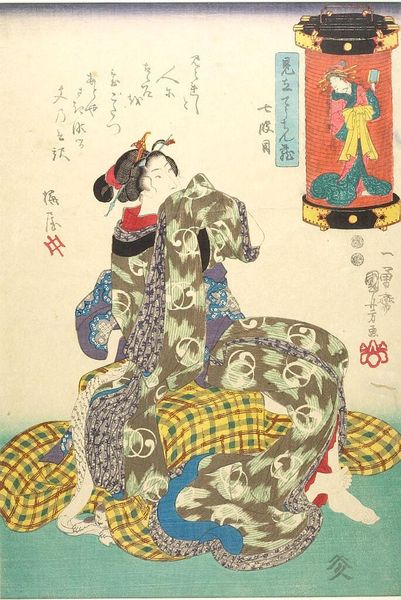
print, woodcut
#
portrait
#
narrative-art
# print
#
asian-art
#
ukiyo-e
#
woodcut
#
japanese
#
history-painting
#
erotic-art
Copyright: Public Domain: Artvee
Curator: This print immediately unsettles me, the vibrant colours clashing so violently with the horrific scene depicted. Editor: It’s definitely a striking image. What we’re looking at is a woodblock print by Tsukioka Yoshitoshi titled "Shiranui Kneeling Beside a Crucified Man," created in 1867. Curator: Crucified man? This takes the crucifixion as pure symbol outside any single tradition. Who is Shiranui, and what does this configuration represent to Japanese society? Editor: Shiranui was a character from the popular Suikoden stories – tales of heroic outlaws, very loosely based on the Chinese novel, "Water Margin." The image certainly appropriates the crucifixion image to highlight both the dramatic exoticism of contact with Europeans, and also to cast these Japanese rebels as Christ-like figures facing brutal suppression from the governing elites of Japan. Curator: The emotional tenor is incredibly complex. There’s a serene detachment in Shiranui’s pose. What are the politics of viewing pain in this way, and where are the politics of sympathy? Editor: Ukiyo-e prints often played with heightened emotion, drawing on theatre and storytelling traditions. The detached aesthetic you observe, alongside the vivid use of color to depict blood and torment, seems almost calculated. But by using the figure of the woman kneeling we receive information about the impact and importance of this event through her sorrow. The figure might embody the cultural tension felt between Japanese tradition and Western influences during that period. Curator: And she herself is literally textualised! There is that strange hovering white space – the lantern sign! I am very interested in where cultural traditions and cultural change create visual rupture. It's as though a playbill announces that he is a criminal about to receive public treatment and she is merely, though beautifully, observing! Editor: The Suikoden narratives themselves were often censored for their rebellious themes. To cloak it with a tragic European narrative must have offered a symbolic distancing device that let Yoshitoshi play freely on anti-establishment sympathies within his audience. Curator: That layering of cultures adds a whole dimension of resistance to the image. Thanks for bringing that into focus. Editor: A pleasure. I find these cultural collisions make for the richest ground to understand a culture’s aspirations and fears.
Comments
No comments
Be the first to comment and join the conversation on the ultimate creative platform.
